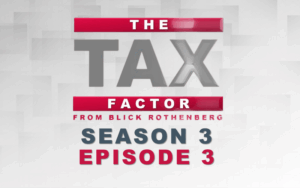
Pension Tax Reliefs in the Chancellor’s Sights: A Budget Built on Limited Options
The Chancellor could slash pension tax relief in the Autumn Budget
19 August 2025 | Author: John Havard
For businesses and individuals alike, any change to pension tax rules would have wide-reaching consequences
When Chancellor Rachel Reeves delivers her Autumn Budget, she will do so with limited room for manoeuvre. Having ruled out a host of straightforward tax-raising measures by sticking to her manifesto pledges, she may instead turn her attention to pensions – a politically sensitive but financially significant area.
John Havard, Consultant, explains:
Rachel Reeves has taken all her easy choices for increasing tax revenue off the table by sticking with her manifesto promises. But one option that remains open to her is targeting pension tax reliefs.
Why Pensions Are on the Agenda
Tax relief on pension contributions costs the Exchequer tens of billions of pounds each year. Critics argue that the system disproportionately benefits higher earners, who both contribute more and receive relief at higher rates of income tax.
The Government’s argument will likely be that as a disproportionate percentage of relief goes to fund the retirements of the ‘better off’, it is not fair for ‘ordinary working people’ to be subsidising the retirement of the ‘wealthy.’ This was the reason given for changes to the rules when George Osborne was Chancellor.
However, the picture has shifted in recent years. Auto-enrolment has expanded the number of workers receiving pension tax relief, while earlier reforms capped how much higher earners can contribute.
The actual percentage of relief going to ‘wealthy’ taxpayers may not be as persuasive today. Firstly, the introduction of auto enrolment has added large numbers of ‘ordinary working people’ to the pool of individuals benefiting from tax relief on their pension contributions. Secondly, changes made by the coalition government greatly restricted how much relief can be claimed by the highest earners.
What Could Change?
Several options are thought to be under consideration:
Restricting relief to the basic rate of tax – Currently, higher-rate and additional-rate taxpayers receive 40% and 45% relief respectively. Cutting this back to 20% would generate substantial revenue. Lots of ‘ordinary working people’ pay the higher 40% taxation rate. If the imperative is to collect lots of money quickly, it might be necessary to make those paying 40% tax losers as well as those who are paying the 45% rate.
Tightening rules on tax-free lump sums – Savers can currently withdraw up to 25% of their pension pot tax-free upon retirement. There have been rumours that the Chancellor might seek to reduce the amount of a pension pot which is eligible to be received tax free as a pension commencement lump sum.
Deferring when tax-free cash can be taken – Instead of reducing the overall relief, the government could delay access to the full lump sum, improving short-term revenues.
An alternative, which would benefit government cash flow, but not reduce the overall level of tax-free relief, might be to keep the present way of determining maximum tax-free amount but restrict the amount of this which could be taken at the point of first accessing the pension pot.
From a government perspective, such a move has another advantage. John Concludes:
An attractive feature from the government’s perspective is that all of the admin hassle of running such an arrangement would be with pension providers, meaning no running costs coming out of public funds.
Implications for Businesses and Savers
For businesses, any reform of pension tax reliefs could have immediate implications for staff reward strategies. Pension contributions are often a cornerstone of employee benefits, particularly for higher earners. If reliefs are curtailed, companies may need to reconsider how they structure remuneration to retain and motivate key talent.
For individuals, especially those in higher tax brackets, the value of long-term retirement savings could diminish. That may lead some to rethink how much they save into pensions compared with alternative investment vehicles. On the flip side, the government could seek to rebalance incentives toward “ordinary” savers, reinforcing its stated goal of boosting retirement savings across the workforce.
Looking Ahead
With fiscal pressures mounting and political promises limiting traditional tax levers, pensions represent one of the few big-ticket items the Chancellor can realistically target. But the trade-offs are delicate. Curtailing reliefs risks discouraging saving at a time when the government also wants people to take greater responsibility for their retirement.
Businesses and individuals alike should watch the Autumn Budget closely. The Chancellor faces a difficult balancing act: raising revenue without undermining public confidence in pensions.
Would you like to know more?
If you would like to discuss any of the above, please speak to your usual Blick Rothenberg contact or use the form below.
Contact Us

You may also be interested in

Lifetime ISA: Why Reform Is Overdue in the Autumn Budget

HMRC’s Push for Digital Transformation Risks Ignoring the Core Problem: Tax Complexity













